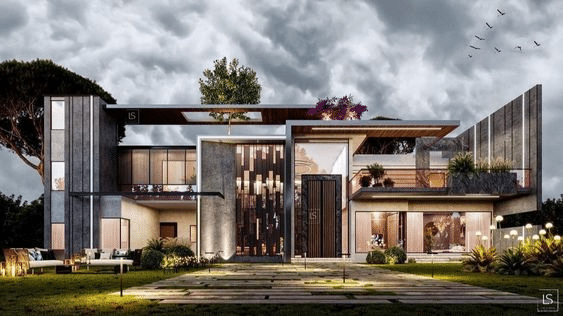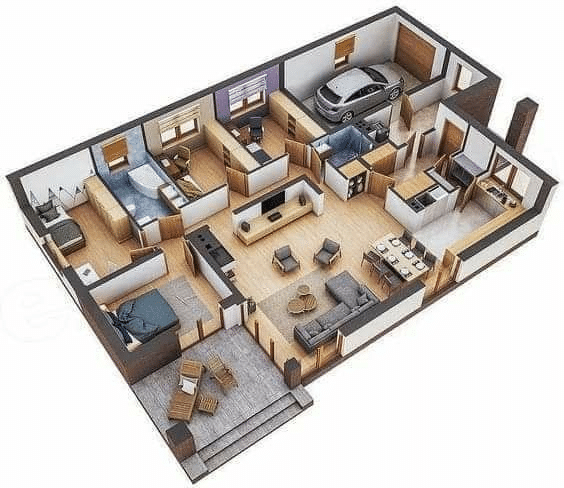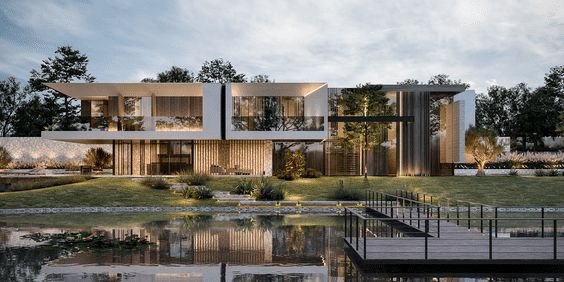In today’s rapidly progressing world, the pace of life and technology is swift. Standing out amidst the competitive business landscape requires you to continuously strive towards crafting superior offers, outshining rivals, and enthralling potential clients.
If you’re a real estate professional, it’s likely that you’re continually seeking innovative methods to expedite your property sales. Should you find that your exhaustive marketing efforts have not quite hit the mark, perhaps it’s time to explore a fresh tactic. We’re referring to the utilization of real estate visualization – a state-of-the-art method of property depiction that has proven indispensable in enhancing the performance of millions of agents worldwide.
Drawing from our rich experience as a premier architectural visualization studio, we’ve consistently supplied our real estate clientele with top-tier computer-generated imagery (CGI) for a considerable span. Through this article, we aspire to enlighten you about the advantages of incorporating 3D rendering into your business operations. As you read on, you’ll undoubtedly acquire valuable insights on how CGI can help accelerate deal closures in your real estate practice.
Advantages of 3D Rendering for Real Estate Professionals
3D rendering holds numerous benefits for real estate agents, from increased sales to cost-effectiveness. Among these benefits, three are particularly noteworthy: the ability to boost sales, enhance visualization, and deliver cost-effective solutions.
Increased Sales
One of the key benefits of utilizing a rendering technique like 3D rendering is the potential for increased sales. With the aid of computer graphics, properties can be presented in a highly attractive and detailed manner, appealing to the aesthetic sensibilities of potential buyers.
This improved representation of property can capture the interest of buyers and increase the likelihood of them making a purchase, thereby driving up sales.
Better Visualization
Property rendering allows for a more precise and comprehensive visualization compared to traditional 2D images or blueprints. Using a robust rendering program, real estate agents can create intricate and interactive visualizations of the properties they are selling.
This can include both static rendering of interiors and exteriors, as well as interactive 3D tours. The rendering process brings a property to life digitally, allowing potential buyers to understand the space and layout much more intuitively than they could with conventional 2D images.
Cost-Effective
Finally, 3D rendering is a cost-effective solution for real estate agents. While there is an upfront investment in the software and training, the returns in the form of increased sales and customer satisfaction can far outweigh these costs.
Additionally, once the initial 3D model has been created, changes and modifications can be made relatively easily, saving time and resources compared to traditional methods. The rendering process also saves costs that would have been incurred in physical staging and photography, further adding to its cost-effectiveness.
3D rendering offers real estate agents a powerful tool for boosting sales, improving visualization, and delivering cost-effective solutions, proving its worth as a key asset in today’s real estate market.
The Revolution of Real Estate Industry through 3D Rendering
The advent of 3D rendering has brought about a transformative shift in the real estate industry. The impact of this technology can be seen in the growing popularity of virtual tours, interactive floor plans, and customizable designs, which are significantly enhancing the sales process.
- Virtual Tours. One of the most revolutionary aspects of the 3D rendering process in real estate is the ability to create immersive virtual tours. This rendering method employs advanced techniques such as ray casting to generate realistic three-dimensional environments that potential buyers can explore from the comfort of their own homes. Unlike traditional two-dimensional images or videos, these virtual tours allow for a 360-degree view of the property, offering a life-like experience that is as close as one can get to physically being there. This immersive interaction significantly enhances the buyer’s understanding and appreciation of the property, leading to more informed decision-making and potentially quicker sales.
- Interactive Floor Plans. Interactive floor plans are another innovative offshoot of 3D rendering technology. They provide a bird’s-eye view of the property layout, allowing buyers to visualize the flow of the rooms and the overall spatial arrangement. Unlike static 2D floor plans, interactive 3D floor plans are dynamic, enabling potential buyers to virtually ‘walk’ through a property. The ability to zoom in and out or rotate the view provides a more comprehensive understanding of the space, facilitating the buyer’s ability to visualize living in the property.
- Customizable Designs. 3D rendering has unlocked the potential for customizable designs in real estate listings. Using advanced rendering programs, properties can be virtually staged with various interior design styles, furniture arrangements, and color schemes. The rendering process enables adjustments to be made with ease, so different versions of the final image can be created to cater to the diverse aesthetic preferences of potential buyers. This level of customization was unheard of with traditional methods and is a testament to the transformative power of 3D rendering in real estate.
3D rendering is changing the landscape of the real estate industry. Its impact is seen in the creation of virtual tours, interactive floor plans, and customizable designs that provide an immersive and personalized experience for potential buyers, thereby enhancing the effectiveness of sales strategies. As sales managers, understanding and leveraging these capabilities could be pivotal to staying ahead in the competitive real estate market.
Utilizing 3D Visualization: Three Tips for Real Estate Managers
Harnessing the full potential of 3D rendering can revolutionize the way real estate managers operate their businesses. Here are three practical tips for effectively utilizing this technology to promote your real estate business.
- Prioritize Quality. To create an impactful first impression, it is crucial to focus on the quality of your 3D visuals. Use advanced techniques such as ray tracing to simulate real-life lighting conditions, shadows, and reflections in your virtual property tours. Remember to incorporate post-processing effects to further enhance the aesthetics and realism of the resulting images. High-quality visuals not only capture attention but also build trust by portraying professionalism and attention to detail.
- Embrace Real-Time Interaction: Providing interactive, real-time 3D experiences can set your business apart. This feature allows prospective buyers to explore properties at their convenience and from various angles, offering them an engaging and immersive experience. By giving potential buyers the freedom to interact with the virtual environment, you are facilitating a deeper connection between them and the property, which can positively influence their purchasing decision.
- Use 3D Visuals Strategically: It’s not just about having 3D visuals; it’s also about how you use them. Use these graphics to highlight the best features of the properties you’re selling. They can help you to effectively communicate the unique selling points that might be difficult to convey through traditional descriptions or photographs. Also, consider where you use these 3D visuals. Deploy them across all your marketing channels – your website, social media platforms, email campaigns, and print materials, to ensure maximum visibility.
The right application of 3D visualization can be a game-changer for real estate sales managers. By prioritizing high-quality visuals, offering real-time interactive experiences, and strategically deploying 3D visuals, you can significantly enhance your business’s marketability. Remember, the goal is not just to adopt new technology, but to leverage it in ways that provide tangible benefits to your business and clients.
Conclusion
As you can now appreciate, 3D rendering services offer novel avenues to enhance your business. They usher you into a mesmerizing universe of 3D visualization teeming with substantial benefits. By harnessing the full potential of these resources, you can elevate your business to unprecedented heights, amass a wealth of successful transactions, and surge ahead of your competitors.
In search of proficient 3D rendering services to augment your real estate sales prowess? Get in touch with us at Fortes Vision. We swiftly and effectively provide captivating photorealistic visuals for your listings!





